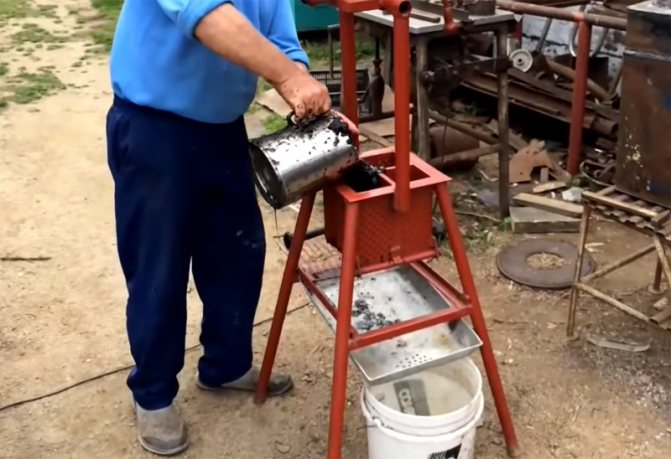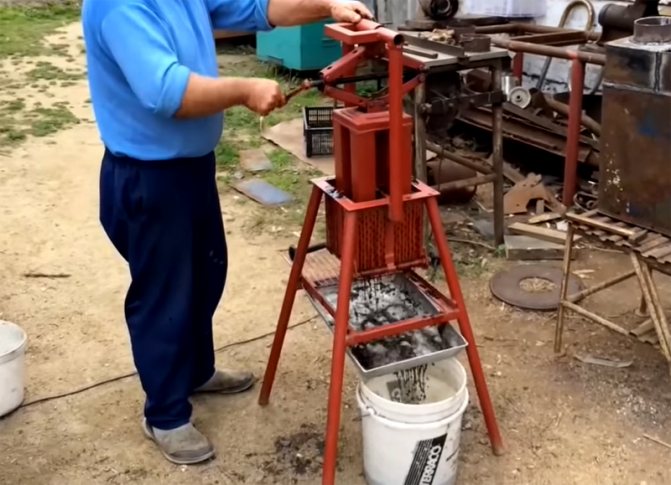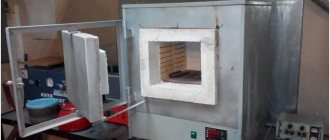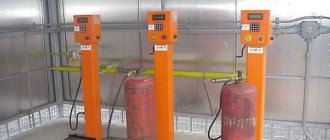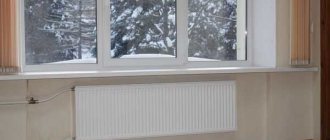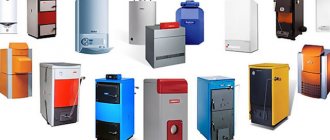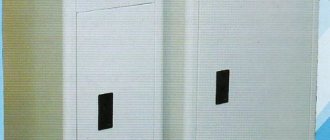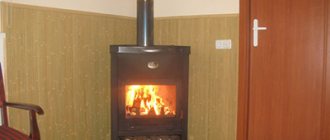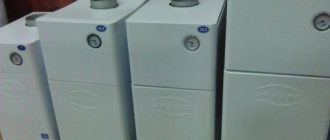Briquetting technology of hard coal / brown coal, coke
Coal briquetting technologies are designed to obtain marketable products from coal dust, screening, substandard and low-quality coal. Black or brown coals and coke can be used as raw materials.
Coal briquetting is a very old technology that has been developed using double roller presses, which has increased productivity and qualitatively improved the economic attractiveness of this business.
SAHUT-CONREUR was one of the companies that started the production of double roller presses at the beginning of the 20th century. We are located in northern France and, since the beginning of the 20th century, have installed more than 1000 briquetting plants in different parts of the world, of which more than 350 are for coal screening briquetting.
The technology of briquetting coal on roller presses was developed for the production of briquettes from coal fines coming after the coal screens and washing. Briquettes are intended for use as fuel for private or industrial boiler houses in the same way as conditioned coal, and are also packaged for retail sale and in this form can be exported.
In most cases, the coal briquetting process takes place with the addition of a binder (coal pitch, petroleum bitumen, tar, molasses and lime, lignosulfonate, starch, polymers ...). In some cases, briquetting is also possible without a binder.
Home production of coal briquettes
It is clear that industrial coal briquetting equipment is not available to the average homeowner due to its high cost. However, even our grandfathers knew how to make briquettes without any equipment. To do this, coal dust and crumbs were mixed with water in such a ratio that a thick mass was obtained, and then cakes were manually molded from it. After drying, such products were successfully burned in a home oven. That is, contrary to the production technology, the mixture for the production of coal briquettes is not dried, but, on the contrary, is moistened.
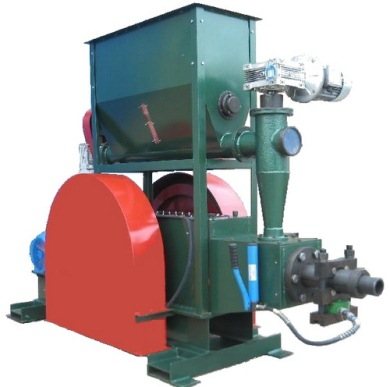
At home, briquettes are made in 2 ways:
- using a hand press;
- on a homemade screw extruder.
The first method is good because the press machine can be purchased inexpensively or made by yourself. Its disadvantage is low productivity, in order to make yourself a fuel briquette for the whole season, you will have to work very hard. In the second case, briquetting of coal dust occurs rather quickly, since the whole process is mechanized. But here the cost of the unit comes to the fore, even a home-made installation will require tangible costs. You will need to purchase a powerful electric motor, gearbox and other parts.

The algorithm according to which the manufacture of coal briquettes is carried out by hand is as follows:
- it is necessary to try to grind the coal crumbs in any available way. The smaller the fraction, the better the product will be;
- mix the resulting composition with water. It is not possible to specify the exact proportions, since they depend on the dust content. The main thing is that the mixture is very thick and molded by hand. There is no need to add clay, this will only increase the ash content;
- fill the form with the composition and activate the manual mechanism;
- remove the briquetted charcoal from the mold and leave to air dry.
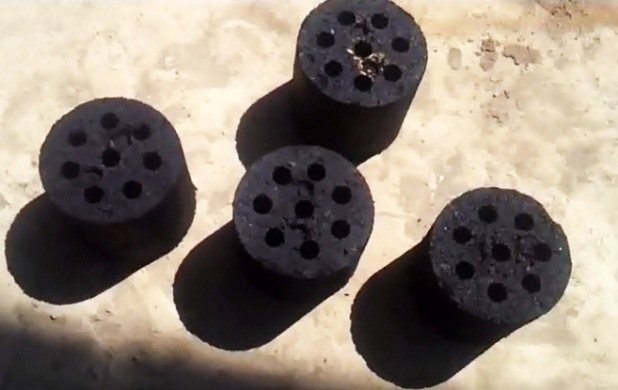

As a result, we get fragile products that are unsuitable for transportation, but they burn well in the stove.One of the ways to briquett coal at home can be found by watching the video:
When a screw press is available, production is greatly simplified and accelerated. Turning on the electric motor, the above mixture is loaded with a shovel into the receiving hopper of the extruder. The output is cylindrical sausages of excellent quality. It is worth noting that such coal dust briquettes have good strength, they can even be transported.


For more information on the operation of the extruder, see the video:
ADVANTAGES OF BRIQUETTED COAL
Technical solution:
- Obtaining a product of the same size, volume, shape and weight.
- Eliminate the problem of dust formation and rejects during transportation.
- The given hardness and strength of the briquette.
- Disposal of waste into commercial products
Consumer and Marketing Benefits:
- Higher energy value
- Longer burning time
- Ash powder
- Less CO2 and sulfur emissions
- Easier packing, transportation, warehousing
- Ready for automatic feeding into the firebox
- Possibility of packaging for the consumer market
- Export deliveries
Equipment you need to work
In order to make briquettes of long burning, you will need an old bathtub, a washing machine made in the USSR and a press that can be made by hand. In today's article there will be no instructions on how to make it, however, if a home craftsman decides to make such a press, it will be enough for him to see it in a photo example - there is nothing complicated there.
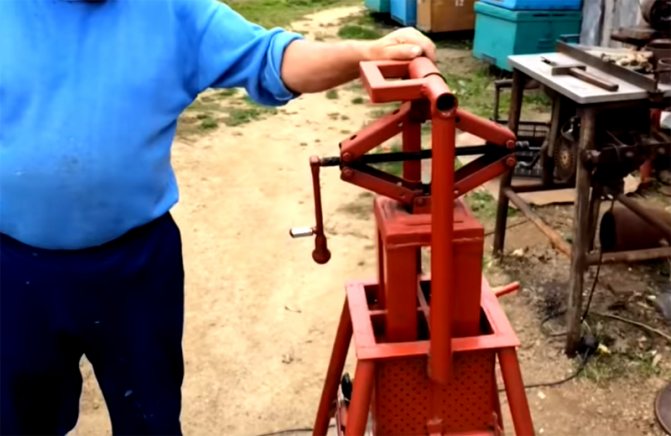

This is what a press for making long burning briquettes looks like.
BRIQUETTING OF COAL WITHOUT BINDER
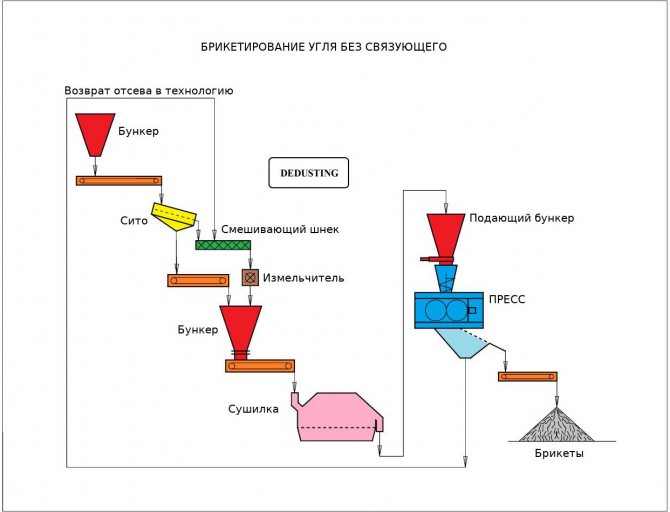

Coal briquetting plant without binder consists of the following components:
- section for sorting and crushing coal, if the size of the coal is too large
- drying section if the moisture content of the coal is too high
- briquetting area on a double roller press
The capacity of a binderless coal briquetting plant can range from a few tons per hour to about 25 t / h.
Other methods and recipes for making long burning briquettes
In fact, anything that burns can serve as a raw material for such a fuel. But soaked cardboard will always be taken as a basis. In any case, it is also soaked and crushed in a washing machine (you can use a drill with a mixer attachment, but this will take too much time). The difference will be in the second component. Instead of coal, you can fill in a couple of buckets of chopped leaves. It is not worth filling the leaves with whole leaves - they will not be saturated with paper pulp, which means that the briquette will exfoliate and burn very quickly (and smoky).
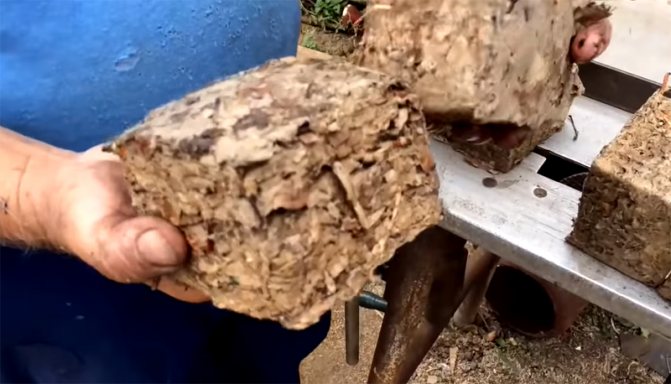

A briquette made of cardboard with foliage is a pretty good fuel for a stove
Another option is mixing shredded cardboard with sawdust. Many argue that this "recipe" is even better than using coal dust. This is quite possible, because there will be almost 4 times more sawdust in the composition than coal. Otherwise, everything is done identically to the first option.
BRIQUETTING OF COAL WITH A BINDER
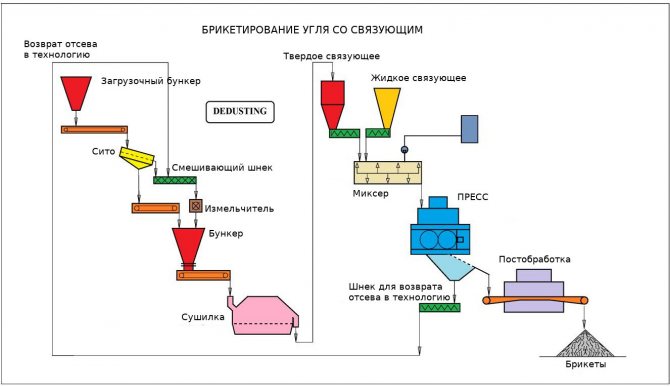

The binder coal briquetting plant consists of the following sections:
- section for sorting and crushing coal, if the size of the coal is too large
- drying section if the moisture content of the coal is too high
- binder addition area
- briquetting area on a double roller press
- (optional) post-processing section (cooling, ripening and drying depending on the binder used)
The capacity of the plant for the production of briquettes from coal with a binder can be from several tons per hour to 100 t / h for large presses.
Possible binders
- coal pitch
- petroleum bitumen
- resin
- molasses and lime
- lignosulfonate
- starch
- polymers, etc.
The specific binder for coal briquettes is determined by the availability in the region and the requirements for the final product.The optimal proportions of the binder and the parameters of the finished briquette are determined when testing coal in France on a pilot basis.
What are coal briquettes?
Previously, firewood was considered the most popular material for heating buildings. Now the industry has stepped forward, and conventional logs have replaced charcoal fuel briquettes. Approximately 25% of mined coal is fines and coal dust, in other words, waste. They are not suitable for high-grade heating, because have a low heat transfer, wake up through the grate in the furnace and therefore has low efficiency. The problem of using substandard is that fine coal blocks the oxygen supply, which causes the furnace to damp.
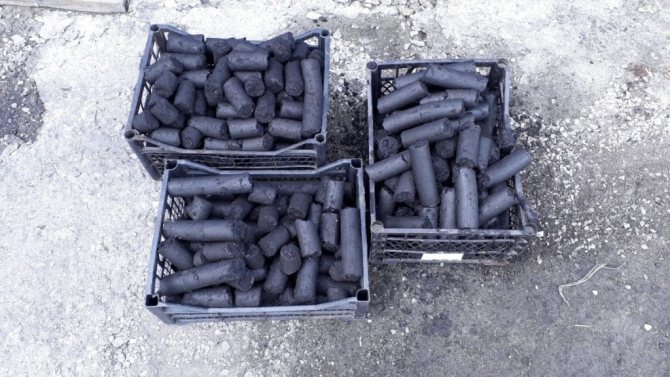

Coal briquettes
Coal briquettes are solid fuel products made in the form of bars of various shapes and sizes, which are pressed under high pressure and temperature. Various raw materials of organic and inorganic origin are used for bonding.
Mostly briquetted charcoal is used for heating private houses, but some metallurgical and chemical enterprises also prefer to use this type of fuel. The only condition for using briquettes is the availability of special solid fuel equipment.
Testing of raw materials and binder for coal briquettes
Coal in each specific deposit has individual chemical and physical characteristics, and different binders may be available in each region.
To accurately determine the required composition and characteristics of the equipment, it is necessary to carry out preliminary testing of the customer's material at the manufacturer's plant in France. To carry out the tests, the customer needs to send the coal to France for testing.
As a result of the tests, it will be possible to:
- determine the required composition and characteristics of the equipment
- determine the type and proportion of the binder
- get a finished briquette and determine its characteristics
- calculate accurate economic indicators of production
Also, only during testing it is possible to determine whether coal is suitable for briquetting without a binder and what the technical and economic indicators of production will be in this case, as well as the quality characteristics of the briquette.
Removing long burning briquettes from the press
After the jack is raised, the lid is opened from below under the compartments, and the briquettes are pushed out using a beater. In appearance, these are ordinary black cubes. In fact, a thoroughly dried briquette can turn into coal, which will provide heat 4-6 times longer than a birch log. And this despite the fact that the cost of manufacturing such fuel is practically not required - only a little water and electricity to operate the washing machine.
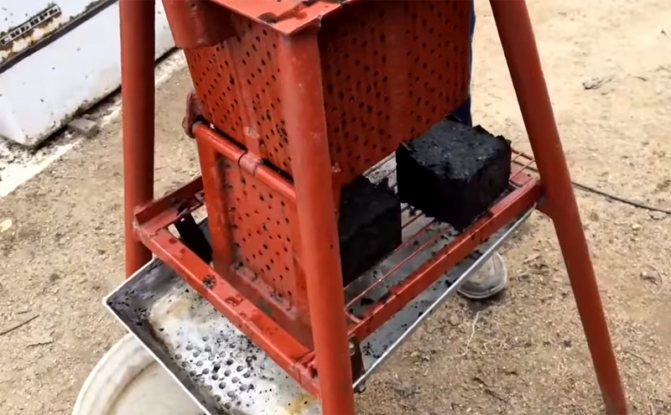

These are the neat briquettes that are obtained during the pressing process.
The resulting briquettes of long burning must be carefully folded and transferred to a dry place. There they will "reach" for another couple of days. But after that, the resulting fuel will give a large amount of heat to the person who made it. And it doesn't matter where they will be used, in a bathhouse or for heating a house.


Briquettes must be carefully folded and sent to dry
COMPARISON OF OPTIONS for coal briquetting with and without a binder
Coal briquetting using a binder:
- +
Suitable for any hard or brown coal - +
High productivity (up to 100 t / h) - +
Low specific energy consumption - +
Possibility to receive waterproof briquettes - +
Low cost of consumables - —
Equipment is more expensive and more complicated, a binder is required
Briquetting coal without binder:
- —
Applicable only for certain coals - —
Drying is compulsory - —
Limited capacity (up to 25 t / h) - —
High specific energy consumption - —
High cost of consumables - +
No binder, easier and cheaper equipment
The technology of coal briquetting without binding additives seems more attractive at first glance, however, at the same time, energy consumption increases significantly, the productivity and quality of the briquette decrease.
After testing, it usually becomes apparent that briquetting with a binder is more economically viable, even considering the costs of purchasing, shipping and storing these materials.
What are the advantages and disadvantages of coal briquettes
It cannot be said with certainty that a briquetted corner is the only correct solution for heating a home. But, if we compare briquetted coal with other types of fuel, then we can highlight a number of advantages that put this fuel in the ranks of the leaders. These include:
- burn for a long time and emit a lot of heat;
- briquettes of the same size generate heat evenly;
- briquettes are lightweight compact, which simplifies their transportation and storage;
- a quality product does not emit carbon monoxide, so it can be used in residential areas with good ventilation;
- with proper production, coal briquettes do not crumble and do not pollute the room;
- ignited in just 10-15 minutes.


Charcoal briquettes burn for a long time and generate a lot of heat
In addition to the advantages of compressed coal fuel, it is necessary to mention its disadvantages. Briquettes glued with binders cannot be used in barbecues, barbecues and grills. The temperature of the heat generated by the coal can exceed the required temperature and the equipment will fail. Also, some briquettes emit carcinogens harmful to the body, which soak cooked products, becoming unsuitable for further consumption. To use coal as kindling for home stoves, safety rules must be observed when enriching and briquetting coal. On sale there is a special eco-friendly briquetted charcoal for barbecues.


Charcoal
Stages of the technological process of coal and coke briquetting
Grinding coal in a hammer crusher
Grinding of coal is necessary to obtain the required homogeneous fraction, therefore, before or after drying, the coal is passed through a hammer mill.
Drying coal in a drying drum
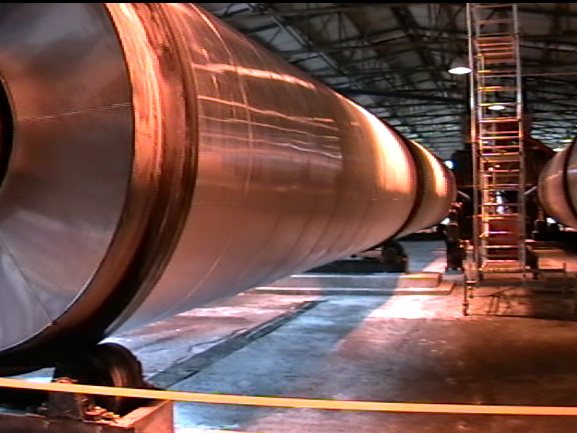

Drying is necessary to lower the moisture content of the coal before adding the binder. The degree of drying depends on the binder and technology used. The final product has a moisture content of 5-10%.
Design features
High thermal loads in the combustion zone require the use of oxidation-resistant materials. The grate for the coal stove is made exclusively of gray cast iron. And to increase the air throughput, the gaps between the rods are made larger than in wood-burning counterparts.
Most metal furnaces have a design life of 5-10 years. In order for the firebox to "go out" for this period on coal, the thickness of its walls must be increased. Many manufacturers (including us) use chrome-containing stainless steels in their construction, which have the following characteristics:
- heat resistance or resistance to destruction at high temperatures;
- low oxidizing ability;
- low coefficient of thermal expansion;
- high melting point.
Special requirements are imposed on the design of the combustion door. In order to avoid the ingress of flue gases into the room, they must fit snugly against the walls and have a lock. Coal-fired oven doors are often cast in cast iron.
The furnace for burning coal has the shape of a truncated pyramid with the base facing up. The grate occupies its entire lower surface. This design, reminiscent of a hopper, provides good air blowing and uniform sagging of the fuel during combustion and reduction in volume.
Due to the relatively low temperature of the exhaust gases, heated secondary air must be supplied to implement the function of long-term coal combustion. In furnaces with the possibility of double combustion, it first passes through the channels located under the casing, and then it is fed into the firebox.
Compaction of crushed coal and coal dust
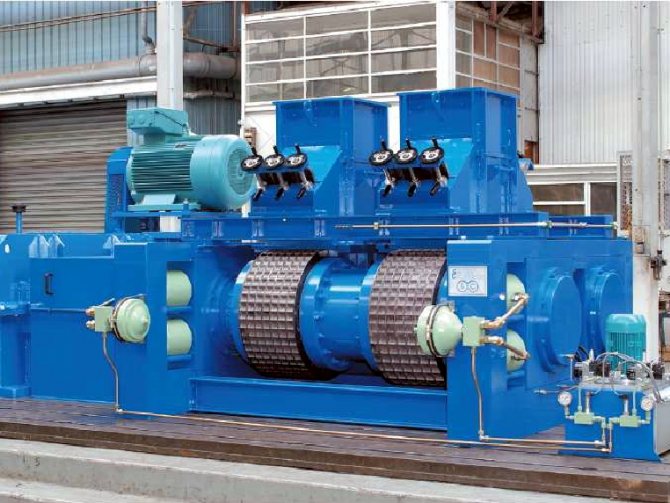

The pressing of coal dust and crushed coal fraction is carried out on two-roller presses that meet the requirements of the industry:
- High performance
- Low specific energy consumption
- High reliability
Our partner is the world leader in the production of this French equipment.
Post-processing (ripening) of a coal briquette
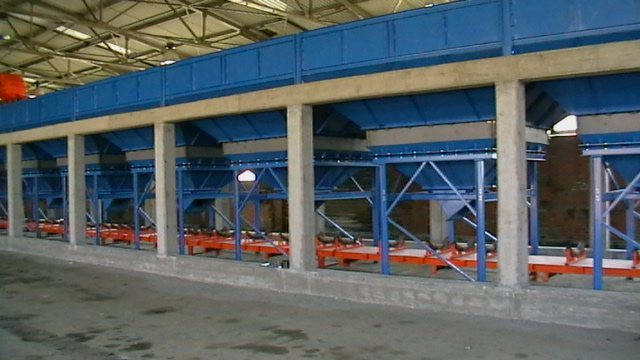

Depending on the type of coal and binder in the technology, it may be necessary to cool in a special way and hold the finished briquette for some time in special bunkers, during which the briquette gains strength.
The holding time is individual and is determined at the testing stage.
If you are interested in the technology for the production of coal briquettes, we will be happy to answer your questions.
Industrial process stages
The production of coal briquettes has a long history and has received a new development with the advent of special presses. This increased labor productivity and made it possible to produce products with decent density and heat transfer rates while maintaining a low cost price.
At the factory, for the manufacture of coal briquettes, a technological chain is used, consisting of a dryer, a crusher and a press, and the delivery of products is provided by a belt conveyor.
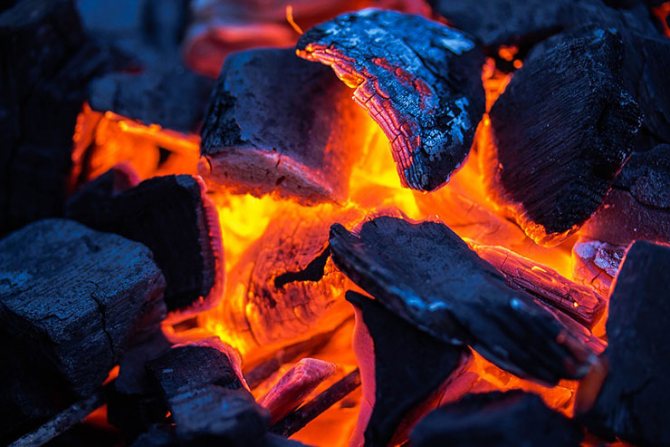

Briquetting goes through many stages
Briquetting with binder additives is carried out in several stages:
- Drying of raw materials. A direct method using heated gas, or an indirect one, where warm steam works, is possible. The strength of the finished briquette depends on how much moisture the original components contained. The permissible humidity is about 15%.
- Extraction of volatile substances. Necessary for low quality coals contaminated with impurities. It is carried out in a distillation apparatus or a coke oven.
- Sorting by fractions. Fines with a particle size of up to 6 mm are sent to a special mixing hopper, and raw materials over 6 mm are sent to a crusher.
- Grinding the coarse fraction in a crusher to a particle size of less than 6 mm. The smaller the grain size, the stronger the briquette is.
- Bonding with binders when heated in a paddle mixer or clay mixer. Required to ensure that the products have sufficient strength during transport and use. The mass fraction of additives ranges from 5 to 15%.
- Compaction by pressing in equipment of various designs. Depending on the features of the installations, the working pressure reaches 150 MPa. The density of the mixture of coal and binder increases several times - from 1.5 to 3.
- Firing in a closed conveyor heated from high-temperature gases. To strengthen the briquettes, a number of binders (ammonium lignosulfonates, petroleum bitumen) require additional heat treatment at 300 ° C.
- Cooling in a hopper with air circulation. In 8 hours, finished products acquire ambient temperature, and waste gases are collected, cleaned and discharged into the atmosphere. The option of cooling by extinguishing with specially prepared water is possible.
- Packing and transportation to storage warehouses.
Pressed bricks and cylinders are successfully replacing conditioned coals as fuel for metallurgical or chemical industries, as well as for private boiler plants.
Equipment for the production of briquettes
The way the products are formed depends on the equipment used. Two fundamentally different types of units are possible:
- Stamp press. Suitable for the production of large batches of briquettes due to energy consumption and financial costs.The heated coal mass is filled into molds and pressed under a pressure of 100 to 120 MPa. The finished product is cooled and takes the form of bricks, tablets and pillows.
- Extrusion machine. Has lower cost and more modest performance. The plastic coal mixture is fed by a screw into the matrix and pressed through it. Extruded briquettes are in the form of cylinders with a hole in the center.
The factors that determine particle size, moisture and pressure during briquetting are the purpose of the product and the equipment. The quality of the feedstock affects the energy intensity of the process. Fine anthracite fractions and dust lend themselves well to processing, while other types of coal behave worse.
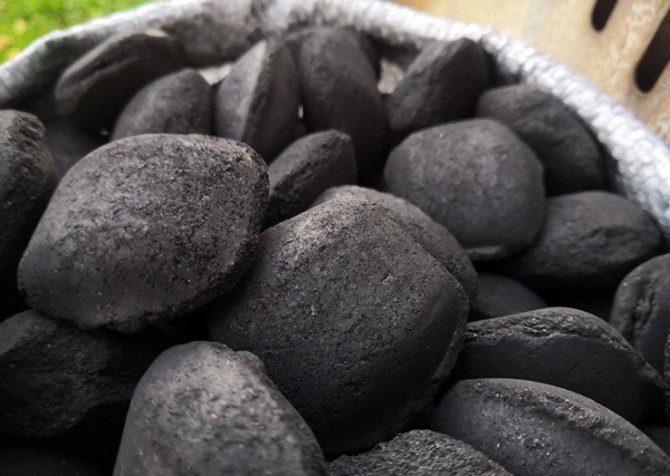

To obtain such a briquette, several equipment are used.
More about briquetting technology
A number of parameters are used to classify fuel briquettes:
- the material from which the briquette is made;
- the form;
- security;
- environmental friendliness;
- type of packaging.
You can, of course, burn such dust, having previously melted the boiler with wood, and then pour a fine fraction on them. But this approach is not an option, it is very troublesome, because you need to pour dust from coal little by little, which means often.
If you put a large amount of coal dust on the wood at once, it still spills into the grate and thus, the problem of partial combustion of fuel will not go anywhere, besides, the rest of the dust will fall between the wood, blocking the air flow and the combustion will weaken significantly.
You can read about combined boilers for wood and electricity in this article.
To get around all of the above inconveniences, you need to press coal dust into briquettes, which in this form will burn excellently, giving all their energy.
You can find out what is preferable to use sawdust or firewood for heating here: https://teplo.guru/kotly/toplivnyie-briketyi-ili-drova.html
Charcoal briquetting
In the production of charcoal, about a quarter of it turns out to be substandard - small pieces and dust. To turn this waste into income, you can make briquettes out of it. Charcoal briquettes can be made at home, if necessary, you can make raw materials for this (charcoal yourself). The principle of charcoal briquetting is no different from the formation of the same fuel from coal:
- Substandard coal is crushed.
- Mixed with a binder. In this case, an ordinary starch paste will cope well with the task. The output should be a slightly damp mass. At the same time, part of the dust rolls into small lumps.
- The resulting mixture is fed into a press, where briquettes are formed.
This video clearly shows the whole technology of charcoal briquetting, but the guys created a form especially for the customer (church charcoal tablets were ordered for incense). Similarly, you can make a mold of any configuration.
findings... Briquettes from crumbs of coal and dust (stone and wood) can be made at home. At the same time, it is difficult to achieve commercial results (only through automation, which means expensive equipment), but it is realistic to make a simple installation for home use.
Ordinary sawdust and wood chips can be burned in boilers made for this, but with coal dust it is not so simple.
Those who have already tried to heat their boiler with such fuel understood that half of it simply disappears, falling between the grate rods into ash, while the second half is sintered into stone and does not allow the burnt fuel to get into the ash. All these reasons lead to a decrease in the quality of combustion, and hence heat transfer.
But on the other hand, throwing out coal dust is at least stupid, it contains a large amount of energy.And here the problem can be solved by converting coal into briquettes, which we will discuss below.
Safety rules for coal preparation and briquetting
If you decide to use briquetted coal as fuel, you should approach its manufacture with all responsibility. The components for the manufacture of solid fuel are selected depending on the place of its use. The briquettes should not contain harmful components so as not to be poisoned by the products of their combustion.
A low-quality product may have poor heat transfer and cannot cope with its direct responsibilities for heating the room. Poorly compressed briquettes will quickly turn to dust and "go away" to waste.
